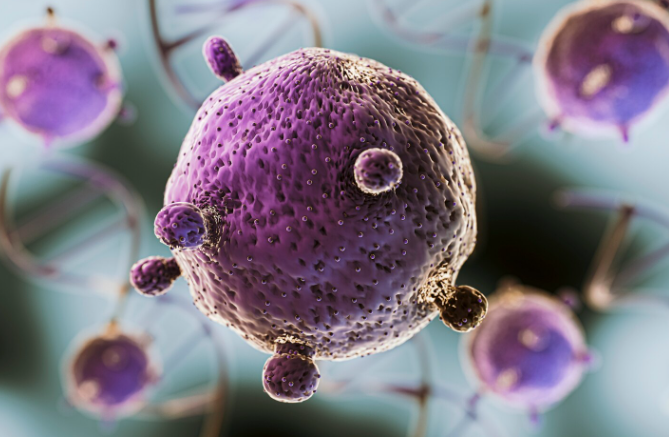Stem cell therapy is no longer a distant promise of the future. Today, it is actively helping patients recover from injuries, reduce pain, and regain mobility in ways that traditional treatments alone cannot always achieve. By using the body’s own regenerative potential, this therapy is being applied in fields ranging from sports medicine to aesthetics, offering hope to those who want to recover faster and live better.
Why Injuries Can Be So Difficult to Heal
When the body suffers an injury—whether a torn ligament, a worn joint, or even a damaged muscle—the healing process can be long and incomplete. Scar tissue often replaces healthy tissue, reducing flexibility and strength. Circulation may be poor in the injured area, slowing down recovery. This is why many patients, despite surgeries or rehabilitation, still struggle with lingering pain and limited function.
Stem cells offer a way to change this trajectory by focusing on regeneration instead of replacement. Rather than covering up symptoms, they stimulate the body’s own healing mechanisms to restore function more completely.
Sports Medicine: Helping Athletes Return to Action
One of the most common uses of stem cell therapy today is in sports injuries. Athletes put their bodies under constant stress, and injuries to knees, shoulders, or tendons are frequent. Traditional approaches such as surgery or extended rest often mean long recovery times and risks of recurrence.
With stem cell therapy, the focus shifts. By injecting stem cells into the affected area, the body receives a boost in its natural ability to repair tissue. Patients frequently report:
- Less pain and swelling.
- Faster return to training and competition.
- More durable recovery compared to surgery alone.
This makes the therapy appealing not only to professionals but also to everyday active people who want to return to their routines without months of downtime.
Joint Pain and Chronic Conditions
Stem cell therapy has also shown promising results for patients dealing with chronic joint pain caused by arthritis or cartilage wear. Unlike painkillers or even joint replacement surgeries, regenerative therapy targets the tissue itself.
For people who thought surgery was their only option, stem cells can provide an alternative: improving mobility, reducing stiffness, and delaying the need for invasive procedures. In our upcoming article, Stem Cells vs. Traditional Treatments: What’s the Difference?, we’ll look more closely at how regenerative medicine compares with conventional options.
Aesthetic and Anti-Aging Applications
Beyond sports and orthopedics, stem cell therapy is increasingly being used in aesthetic medicine. Patients turn to it to improve skin quality, reduce signs of aging, and stimulate hair growth. By promoting collagen production and cellular renewal, stem cells help the skin look fresher and healthier in a way that topical creams or fillers cannot achieve on their own.
These aesthetic uses illustrate the broader principle of regenerative medicine: helping the body heal and rejuvenate from within, rather than simply covering up the problem.
Post-Surgical Recovery
Surgery can repair or replace what is damaged, but it also leaves wounds that must heal. Stem cell therapy supports this stage by stimulating faster tissue repair, reducing inflammation, and minimizing scar formation. This is particularly relevant for orthopedic and reconstructive surgeries, where recovery time is critical for long-term outcomes.
This theme is explored further in our dedicated article, The Role of Stem Cells in Post-Surgery Healing, which looks at how regenerative therapy complements traditional surgical recovery.
Safety and Myths
As with any medical innovation, stem cell therapy has its share of myths. Some patients worry it is experimental or unsafe, while others believe it can “cure everything.” The truth lies in between: it is not a miracle, but it is a well-studied, safe therapy when performed in professional medical centers with proper protocols. We will address these misconceptions in detail in our article, Safety and Myths About Stem Cell Therapy.
What Patients Can Expect
Stem cell treatments are typically outpatient procedures. A sample of cells—either from bone marrow, fat tissue, or donated sources—is processed and injected into the target area. Recovery is generally fast, with many patients returning to daily life within a day or two. The regenerative effects, however, take time: weeks to months, as the cells stimulate natural repair mechanisms.
A Regenerative Approach to Health
What makes stem cell therapy so powerful is its ability to restore rather than replace. From injured athletes to people living with arthritis, from patients recovering from surgery to those seeking healthier skin, the therapy is proving its versatility. It bridges the gap between conventional medicine and regenerative innovation, offering patients not just treatment, but renewal.
At Dr. Diego Hernández’s medical center, we offer personalized stem cell therapy protocols designed for orthopedic, aesthetic, and recovery needs. Each treatment plan is built after a careful evaluation, ensuring safety and maximizing results. Our facilities at Cl. 7 Sur #42-70, Office 1211 – Forum – Poblado, Medellín, are equipped with advanced technology to make your recovery both safe and effective. To learn how stem cell therapy could support your journey from injury to recovery, contact us at (+57) 311 797 0832 or write to info@drdiegohernandez.com.co. Take the first step toward a healthier, more active future today.




